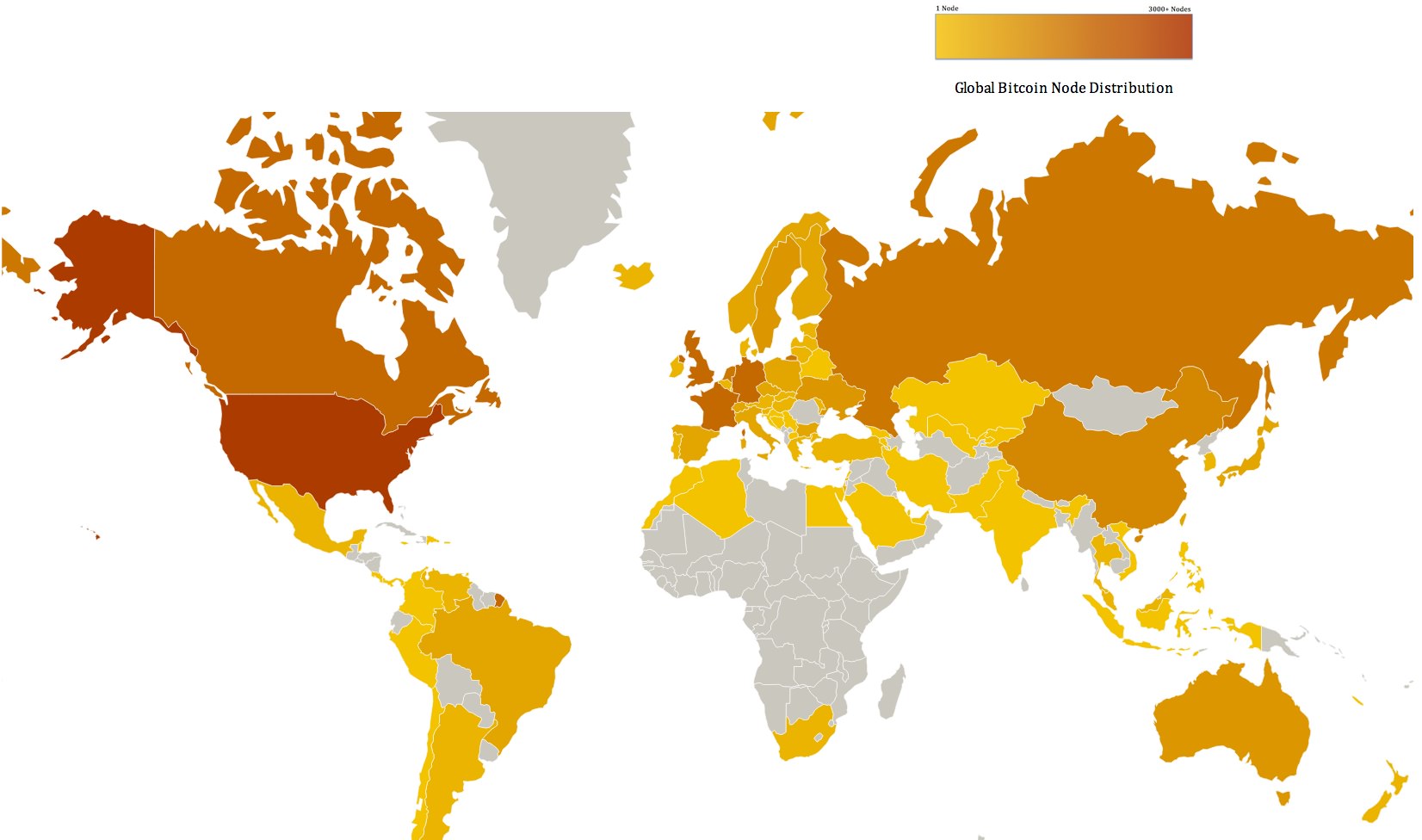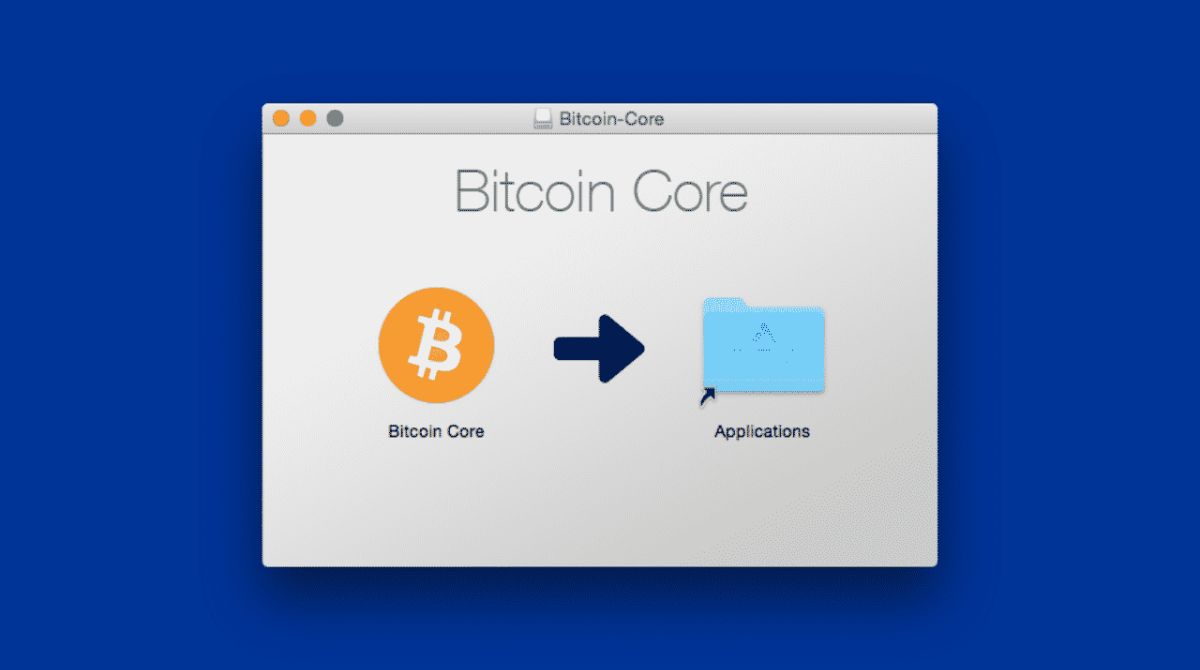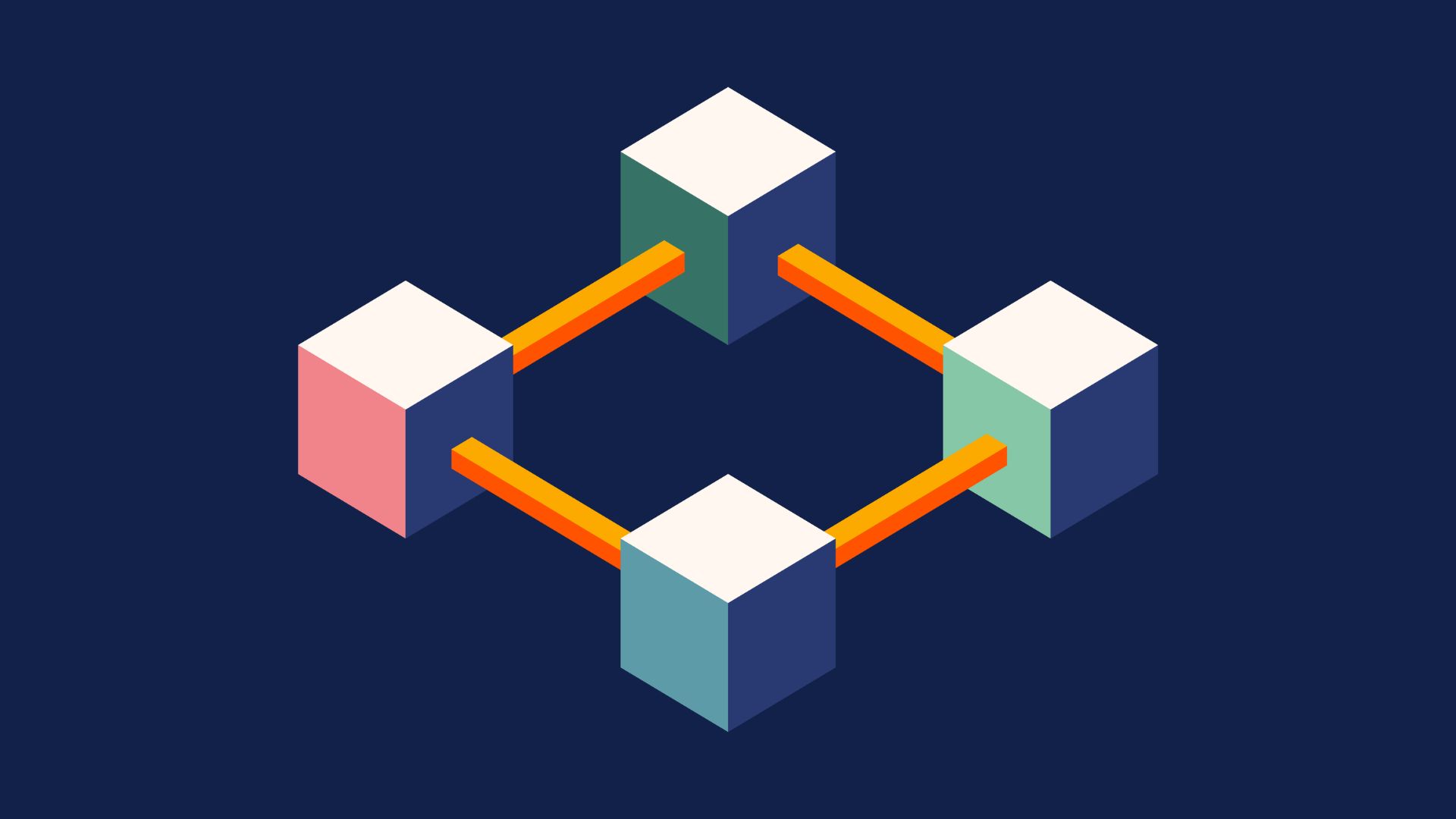Introduction
Welcome to the fascinating world of Bitcoin, where decentralized digital currency is revolutionizing the way we perceive money and financial transactions. In this article, we will explore the concept of Bitcoin nodes and their significance in the Bitcoin network.
Bitcoin, often referred to as a cryptocurrency, operates on a decentralized peer-to-peer network. This means that it doesn’t rely on a central authority like a government or a bank to validate transactions. Instead, the network consists of thousands of computers known as nodes, which collaborate to maintain the integrity and security of the Bitcoin blockchain.
Bitcoin nodes play a crucial role in facilitating transactions and ensuring that the network operates smoothly. They act as participants in the network, helping to verify the legitimacy of transactions, store a copy of the entire blockchain, and propagate new transactions across the network.
By participating in the Bitcoin network as a node, individuals contribute to the overall health and security of the system. Nodes work together to reach a consensus on the validity of transactions, helping to prevent double-spending, which is a significant challenge in digital currencies without a central authority.
The decentralized nature of Bitcoin nodes ensures that there is no single point of failure or vulnerability in the network. This means that even if some nodes go offline or are compromised, the network as a whole remains functional and secure. Additionally, nodes help to distribute and replicate the blockchain data, making it more resilient and resistant to attacks.
Now that we have a basic understanding of Bitcoin nodes and their importance, let’s dive deeper into their numbers, types, and the process of becoming a node. We will also explore the challenges associated with running a Bitcoin node and discuss the trends in the number of nodes over time.
What are nodes in Bitcoin?
In the world of Bitcoin, a node refers to any computer that participates in the Bitcoin network. These nodes are the backbone of the decentralized system, working together to maintain the integrity and transparency of the blockchain.
Each node maintains a complete copy of the Bitcoin blockchain, which is essentially a digital ledger containing all the transaction data that has ever occurred on the network. This means that every Bitcoin node has the ability to verify and validate transactions by independently checking the entire transaction history.
Nodes also play a crucial role in relaying new transactions and blocks across the network. When a user initiates a Bitcoin transaction, it is broadcasted to the network and picked up by the nodes. These nodes then validate the transaction, ensuring that the sender has sufficient funds and the transaction adheres to the network’s rules.
Once validated, the transaction is added to a block, which is a collection of transactions. Nodes compete to solve a complex mathematical puzzle to add a new block to the blockchain. The successful node, referred to as a miner, then broadcasts the newly mined block to the network, and other nodes verify and add it to their own copies of the blockchain.
Nodes also contribute to the security and decentralization of the Bitcoin network. Their presence makes it more difficult for malicious actors to attack or manipulate the system. Additionally, nodes help to prevent double-spending, a scenario where a user attempts to spend the same Bitcoin more than once, by enforcing the consensus rules of the network.
It’s important to note that not all Bitcoin nodes are created equal. There are different types of nodes, such as full nodes, pruned nodes, and lightweight nodes. Each type has varying levels of functionality, storage requirements, and participation in the network. We will explore these different types of nodes in the next section.
Why are nodes important?
Bitcoin nodes play a crucial role in the functioning and security of the Bitcoin network. Here are a few key reasons why nodes are important:
1. Validation and Security: Nodes validate transactions by checking them against the consensus rules of the network. This helps to prevent fraudulent or invalid transactions from being included in the blockchain. Nodes also contribute to the security of the network by independently verifying transactions and blocks, making it difficult for attackers to manipulate the system.
2. Decentralization: Bitcoin is designed to be a decentralized digital currency. Nodes contribute to this decentralization by distributing the blockchain data across thousands of computers worldwide. This removes the reliance on a central authority and makes the network more resilient to attacks or censorship.
3. Relay of Transactions and Blocks: When a user initiates a Bitcoin transaction, nodes are responsible for relaying that transaction to other nodes on the network. This ensures that the transaction reaches miners who can include it in a block. Similarly, when a new block is mined, nodes quickly propagate it to other nodes, allowing for a fast and efficient validation and confirmation process.
4. Consensus Mechanism: Nodes participate in the consensus mechanism of Bitcoin, ensuring that all nodes agree on the state of the blockchain. This consensus is achieved through a process called mining, where nodes compete to solve a mathematical puzzle. Nodes reach a consensus on the longest valid chain, preventing double-spending and maintaining the integrity of the network.
5. Transparency and Trust: Bitcoin’s public ledger, the blockchain, is accessible to all nodes. By storing a full copy of the blockchain, nodes contribute to the transparency of the network, allowing anyone to verify transactions or audit the system. This transparency helps to build trust among users and promotes the overall credibility of the Bitcoin network.
In summary, nodes are vital to the functioning and security of the Bitcoin network. They validate transactions, maintain the blockchain, contribute to decentralization, relay transactions and blocks, participate in the consensus mechanism, and ensure transparency and trust. Without nodes, the decentralized nature of Bitcoin would not be possible, and the network would be vulnerable to manipulation and attacks.
How many Bitcoin nodes are there?
The number of Bitcoin nodes fluctuates over time as new nodes join the network and existing nodes go offline or upgrade their software. It’s important to note that not all Bitcoin nodes are publicly visible, as some users choose to run private or hidden nodes for various reasons. However, we can estimate the number of publicly reachable nodes using network scanning techniques.
As of [insert date], there are approximately [insert estimated number] publicly reachable Bitcoin nodes. It’s worth mentioning that this number represents only a fraction of the total number of nodes in the Bitcoin network. The actual number of nodes is likely to be higher, considering the presence of hidden and private nodes.
The distribution of Bitcoin nodes is not evenly spread across all geographical regions. Some countries and regions have a higher concentration of nodes due to factors such as technological infrastructure, Bitcoin adoption, and the presence of mining operations. Countries like the United States, Germany, China, and Canada have a significant number of Bitcoin nodes, but the network remains global in its reach.
The number of Bitcoin nodes has seen fluctuations over the years. In the early days of Bitcoin, the number of nodes was relatively small, as the network was still gaining popularity. However, as Bitcoin gained traction and more individuals and businesses began participating, the number of nodes increased significantly. The decentralized nature of Bitcoin allows anyone with an internet connection to run a node, which has contributed to the growth of the network.
It’s worth noting that running a Bitcoin node requires a certain level of technical knowledge and resources. As the blockchain grows larger in size, the storage requirements for running a full node also increase. Thus, the number of full nodes may be lower compared to other types of nodes, such as lightweight or pruned nodes, which require less storage capacity.
Regular updates to Bitcoin’s software also affect the number of nodes. When a new version of the Bitcoin software is released, node operators need to upgrade their software to remain compatible with the network. Failure to upgrade may result in the node becoming incompatible with the majority of the network, potentially reducing the number of active nodes temporarily.
Overall, the number of Bitcoin nodes is constantly evolving, influenced by factors such as global adoption, technological infrastructure, software updates, and user participation. The distributed nature of the network ensures that even with fluctuations in the number of nodes, the Bitcoin network remains decentralized, secure, and resilient.
Types of Bitcoin nodes
Bitcoin nodes come in different types, each with its own characteristics and functionalities. Let’s explore the main types of Bitcoin nodes:
1. Full Nodes: Full nodes, also known as Bitcoin Core nodes, store a complete copy of the Bitcoin blockchain and validate transactions and blocks independently. They offer the highest level of security and decentralization, as they fully participate in the consensus mechanism of the network. However, running a full node requires substantial storage capacity and bandwidth, as the blockchain continues to grow in size.
2. Pruned Nodes: Pruned nodes are similar to full nodes, but they store a pruned version of the blockchain. Pruned nodes discard old transaction data, reducing storage requirements significantly. While this reduces the ability to independently verify the entire history of the blockchain, pruned nodes still contribute to network security by validating new transactions and blocks.
3. Lightweight Nodes: Lightweight nodes, also known as SPV (Simplified Payment Verification) nodes, do not store the entire blockchain but rely on full nodes for transaction verification. They only store block headers and a subset of the blockchain data, making them more resource-efficient. However, lightweight nodes sacrifice some level of security and trustlessness, as they depend on other nodes to provide accurate information.
4. Mining Nodes: Mining nodes are specialized nodes that aim to participate in the process of mining new blocks. These nodes dedicate their computational power to solving the mathematical puzzle required to mine a block. Mining nodes have additional functionalities, such as creating and validating coinbase transactions, which reward miners with newly minted Bitcoins.
5. Hidden Nodes: Hidden nodes are not publicly visible and intentionally hide their IP addresses, making it difficult to determine their exact numbers. These nodes provide privacy to their operators or may be part of a private network or organization. Hidden nodes contribute to the overall network by connecting with other nodes while maintaining their privacy.
6. Public Nodes: Public nodes, also referred to as listening nodes, actively listen and accept incoming connections from other nodes in the network. They play a crucial role in facilitating the propagation of transactions and blocks and contribute to the overall connectivity and resilience of the Bitcoin network.
It’s important to note that some nodes can function as multiple types. For example, a node could operate as both a full node and a mining node simultaneously. The choice of node type depends on individual preferences, technical capabilities, and specific use cases.
Understanding the different types of Bitcoin nodes allows individuals to choose a node that best suits their needs and resources. Whether it’s participating in transaction validation, contributing to network security, mining new blocks, or maintaining privacy, each type of Bitcoin node plays a unique role in the decentralized ecosystem.
How to become a Bitcoin node
Becoming a Bitcoin node is a straightforward process that requires some technical knowledge and resources. Here are the steps to become a Bitcoin node:
1. Set up a computer: Start by setting up a dedicated computer to run the Bitcoin node software. You can use an existing computer or even a Raspberry Pi device, as long as it meets the minimum specifications.
2. Choose the node software: Select the Bitcoin node software that you want to run on your computer. The most popular and widely used software is Bitcoin Core, which is the original client developed by the Bitcoin community. You can download the latest version of Bitcoin Core from the official website.
3. Install and configure the node software: Follow the installation instructions provided by the node software. Once installed, you will need to configure the software by specifying the data directory where the blockchain data will be stored and adjusting any desired settings.
4. Download the blockchain: After configuring the node software, you will need to download the entire Bitcoin blockchain. This process may take some time, as the blockchain is constantly growing. Ensure that you have enough storage space available to accommodate the blockchain data.
5. Keep the node synchronized: Once the blockchain is downloaded, your node will start synchronizing with the network. This process involves verifying all the transactions and blocks in the blockchain and can take several hours or even days to complete. It’s crucial to keep your node connected to the internet and powered on to stay synchronized with the latest blockchain updates.
6. Maintain the node: Regularly update the node software to ensure it remains compatible with the latest version of the Bitcoin protocol. Stay informed about any updates or security patches released by the developers of the node software. Regularly monitor the health and performance of your node to ensure it operates smoothly.
7. Contribute to the network: By running a Bitcoin node, you become a part of the decentralized network and contribute to its security, transparency, and reliability. Your node will validate transactions, relay them to other nodes, and help maintain the overall health of the network.
Running a Bitcoin node is not only an opportunity to contribute actively to the Bitcoin network but also a way to enhance your understanding of the technology behind it. It allows you to become more involved in the Bitcoin community and ecosystem. However, it’s important to note that running a full node may require continuous power supply, a stable internet connection, and adequate hardware resources.
If running a full node seems too resource-intensive, you can consider running a lightweight or pruned node, which requires less storage space and computing power but still contributes to the network in a meaningful way. The choice of node type ultimately depends on your technical capabilities, resources, and desired level of participation in the Bitcoin network.
Challenges of running a Bitcoin node
While running a Bitcoin node can be rewarding, there are several challenges that node operators may encounter. Here are some of the common challenges:
1. Resource Requirements: Running a full Bitcoin node requires significant resources, especially in terms of storage capacity and bandwidth. As the blockchain grows larger, the storage requirements increase, making it necessary to have sufficient disk space to store the entire blockchain. Additionally, syncing with the network and staying updated can consume a significant amount of bandwidth.
2. Technical Knowledge: Operating a Bitcoin node involves understanding the complexities of the Bitcoin protocol and the underlying technologies. Node operators need to have a solid understanding of networking, computer security, and blockchain technology to effectively configure and troubleshoot their nodes. This technical knowledge can pose a learning curve for those new to Bitcoin.
3. Continuous Connectivity: To actively participate in the Bitcoin network, a node needs to be connected to the internet and powered on consistently. Any interruptions in internet connectivity or power supply can result in synchronization issues and affect the proper functioning of the node. Maintaining a reliable and continuous connection can be a challenge, particularly in regions with unstable internet infrastructure.
4. Hardware Limitations: Older or low-spec hardware may struggle to keep up with the resource demands of running a full Bitcoin node. Slow processors and limited RAM can hinder the node’s performance and slow down synchronization with the blockchain. Node operators may need to invest in upgraded hardware to ensure the smooth operation of their nodes.
5. Network Security: Running a node means exposing your computer to potential security risks. Malicious actors may attempt to target nodes to disrupt the network or gain unauthorized access to sensitive information. Node operators need to implement security best practices, such as firewall configurations, regular software updates, and strong authentication measures, to mitigate these security risks.
6. Bandwidth Usage: Keeping a Bitcoin node synchronized with the network can consume a significant amount of bandwidth, especially during the initial blockchain download and continuous data updates. This high bandwidth usage can be a limiting factor for users with bandwidth caps or limited internet plans, potentially leading to additional costs or restrictions.
7. Ongoing Maintenance: Bitcoin software is constantly evolving, with regular updates and bug fixes being released. Node operators are responsible for keeping their node software up to date with the latest releases to ensure compatibility with the evolving Bitcoin network. Regular maintenance tasks, such as monitoring node health, updating software, and troubleshooting issues, require ongoing attention and effort.
Despite these challenges, running a Bitcoin node can be an immensely rewarding experience. It allows individuals to actively contribute to the network, gain a deeper understanding of the Bitcoin ecosystem, and participate in the decentralized nature of the cryptocurrency. By overcoming these challenges and maintaining a well-functioning node, operators play an essential role in the overall health and security of the Bitcoin network.
Is the number of Bitcoin nodes decreasing?
The number of Bitcoin nodes has witnessed fluctuations over time, but overall, the trend has shown an increase in the long term. While it is difficult to precisely determine the exact number of Bitcoin nodes due to the presence of private or hidden nodes, publicly reachable nodes provide some insights into the overall network participation.
There have been instances where the number of publicly reachable nodes has decreased temporarily. This can be attributed to various factors, such as technical issues, software updates, or temporary disruptions in the network. For example, during a new software release, some node operators may temporarily go offline to upgrade their software, leading to a temporary decrease in the number of active nodes.
However, these fluctuations in the number of Bitcoin nodes are not indicative of a long-term decline. In fact, the number of publicly reachable nodes has generally shown an increasing trend over the years. This is a testament to the growing interest and adoption of Bitcoin, as more individuals and organizations participate in the network as nodes.
While the total number of nodes may vary, it’s important to note the decentralization aspect of Bitcoin. Even if some nodes go offline or leave the network, the distributed nature of Bitcoin ensures that other nodes continue to maintain and validate transactions, ensuring the security and functionality of the global network.
Furthermore, advancements in technology and improvements in software make running a Bitcoin node more accessible and user-friendly. This has contributed to a broader range of individuals, businesses, and organizations joining the Bitcoin network as nodes.
It’s essential to consider that Bitcoin’s network strength does not solely rely on the number of nodes. The diversity and distribution of nodes across different geographical regions, as well as the presence of well-connected and reliable nodes, play crucial roles in maintaining a robust and resilient network.
Overall, while there may be temporary fluctuations, the long-term trend suggests an increasing number of Bitcoin nodes. As interest in and adoption of Bitcoin continue to grow, it is expected that more individuals and organizations will join the network as nodes, contributing to the decentralization and security of the Bitcoin ecosystem.
Conclusion
Bitcoin nodes are an integral part of the decentralized Bitcoin network, facilitating transactions, maintaining the blockchain, and contributing to its overall security and integrity. By running a Bitcoin node, individuals actively participate in the network, validate transactions, and help ensure the smooth functioning of the cryptocurrency.
We explored the different types of Bitcoin nodes, including full nodes, pruned nodes, lightweight nodes, mining nodes, hidden nodes, and public nodes. Each type has its own characteristics and functionalities, catering to diverse needs and technical capabilities.
While there are challenges associated with running a Bitcoin node, such as resource requirements, technical knowledge, continuous connectivity, and ongoing maintenance, these obstacles are outweighed by the benefits and opportunities for individuals to contribute actively to the decentralized Bitcoin network.
The number of Bitcoin nodes has shown fluctuations over time, but overall, the trend has been an increase in the long term. The growing number of publicly reachable nodes indicates the expanding interest, adoption, and participation in the Bitcoin ecosystem.
Despite the fluctuations, the decentralized nature of Bitcoin ensures that even if some nodes go offline or leave the network, other nodes continue to maintain the integrity and functionality of the Bitcoin network. The distributed presence of nodes across different geographical regions further strengthens the resilience and security of the network.
As technology advances, running a Bitcoin node becomes more accessible, allowing a broader range of individuals, businesses, and organizations to join the network. This increased participation further enhances the decentralization and democratization of the Bitcoin ecosystem.
In conclusion, becoming a Bitcoin node offers individuals the opportunity to actively engage with the technology and community, contribute to the security and transparency of the network, and strengthen the decentralized nature of the revolutionary cryptocurrency known as Bitcoin.

























